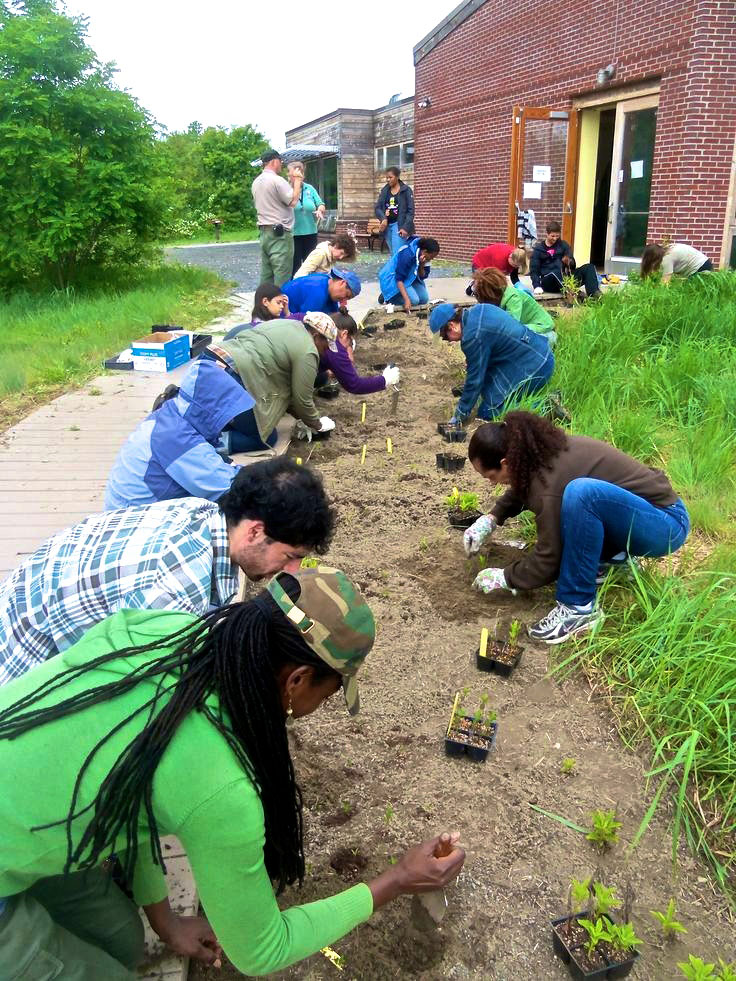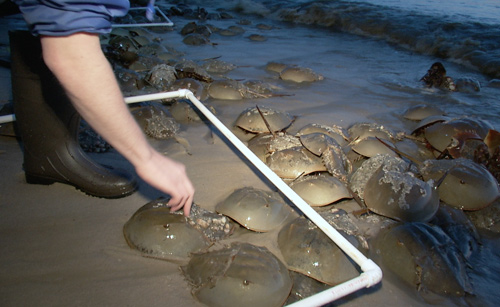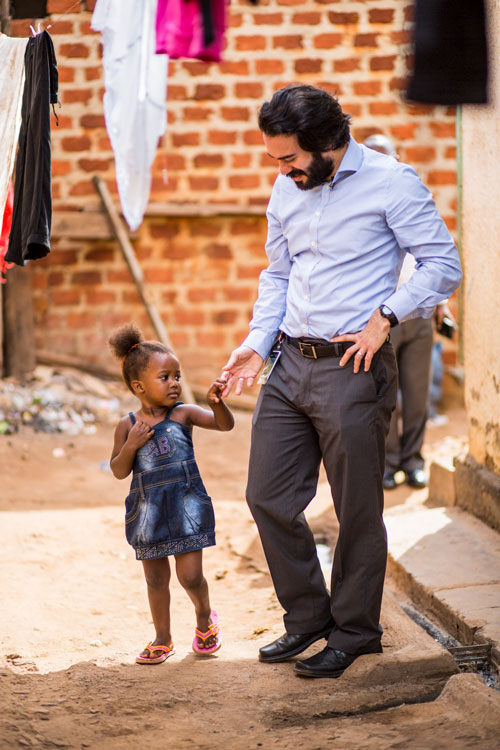
Newsletter
Sign up and stay in-the-know about The Crowd & The Cloud and the world of citizen science.

Citizens4Earth

The fourth and final episode of THE CROWD & THE CLOUD looks at how technological innovation pairs with engaged citizens to fill gaps in knowledge. Follow Waleed Abdalati, host of the show, as he explores a “Year in the Life of Citizen Science.” From birding to surfing, there’s a project for anyone and everyone at all times of the year. And showing the value of numbers in improving human lives, in Uganda World Bank economists and local partners at the Bureau of Statistics travel far and wide to fill a data gap about living standards across the country.
Christmas for the Birds: Counting not Killing
In 1900, the Audubon Society began what is now considered one of the longest running citizen science projects: the Christmas Bird Count. Today, volunteers spot species and population numbers at thousands of locations across North America, adding to one of the world’s largest ecological data sets. The data that’s gathered have become a unique and valuable resource for researchers in understanding Earth’s changing environment. Anybody can take part in the annual count, from families and students, to biologists and enthusiastic birders. Some volunteers have been taking part for close to 50 years because, as Tropical Audubon member Paul Bithorn says, “Once you get the bug, you’ll have it for life. I’ll be doing it as long as I’m alive.”

Smartfin: Stoked for Science
Citizen science surfers are catching so much more than waves, they’re beginning to collect ocean data for scientists! “Stoked for Science” profiles one of America’s newest citizen science projects, Smartfin, and its collaborators at the Scripps Institution of Oceanography in San Diego. Innovative fins contain sensors for temperature, pH (tracking ocean acidification) and salinity: they’re smaller and much less expensive - $200 vs. $20,000 - than the instruments used by academic researchers. Volunteers get to go surfing for science, and it’s easy and fun, with no loss of performance from the sensor-equipped board, a key factor for Smartfin founder, Andy Stern, and lead engineer, Benjamin Thompson. But project partner, The Surfrider Foundation, isn’t just for surfers: it’s for all beach enthusiasts who want to clean up their slice of paradise. With over 3 million surfers in the US alone, and an estimated 23 million worldwide, just imagine the possibilities.
Social media and new technologies can make life better for people everywhere. But can citizen science and mobile apps also protect the species with whom we share the planet? CROWD & CLOUD travels through the year, and from New York to California, to find out.

Fall: Plants, Pollinators & Resilience
In early Fall, in America’s Northeastern states, flowers are still blooming but pollinators seem to be in trouble. Using the Nature’s Notebook app, volunteers in the New York Phenology Network track data on bees and other pollinators to be used in scientific research. And after Hurricane Sandy struck, youthful citizen scientists organized by the National Wildlife Federation have become active in the Jamaica Bay Wildlife Refuge (part of the Gateway National Recreation Area), to assess and repair damage to both plants and pollinators. Says Kerissa Battle, “What’s fantastic about the Citizen Science movement is that you have people who can steward these small green spaces, and pay attention to what is actually happening in them.”
Winter: Masses of Monarchs
Fast forward to Winter, where volunteers with the Xerces Society’s Western Monarch Count seek out sleeping butterflies, collecting vital information on population numbers. Volunteers Cheryl Powers and Steven Thrasher explain that counting huge numbers of monarchs is just like numbering jelly beans in a jar. It’s clearly fun, but count coordinator Jessica Griffiths notes, “Citizen science is more than people who are excited or participating, or want to make a difference. There has to be some science behind it, and so in the case of the Western Monarch Thanksgiving Count, all of our volunteers are rigorously trained on the proper counting protocol.”

Spring: Timing Trees
By now it’s springtime and buds are bursting, and that same Nature’s Notebook app and citizen science are delivering hyper-local data about species-specific seasonal changes in the Valle De Oro Wildlife Refuge near Albuquerque NM. This is the first urban wildlife refuge in the Southwest, and managers need to know differences in fruiting behavior between the native cottonwoods and invasive Siberian elms. With only one full time staffer, citizen science is able to capture essential management data to help the new refuge grow and flourish, showcasing its unique “bosque” characteristics.
Summer: Counting Crabs
Ending our year-long journey in summer on the Delaware Bay, horseshoe crabs come ashore to spawn at high tide when the moon is new or full. Their eggs provide a vital energy boost to migrating birds such as Red Knots in their long commute from South America to the Arctic. Over-harvesting of the crabs for bait and their blood (used in medical procedures) was threatening both species: counting crabs provides invaluable data about how conservation policies are working. Like Jessica in California, Nature Conservancy state assistant director Bob Allen says, “The only way these kinds of surveys happen up and down the Bay is with the help of volunteers. There’s just no way that it could be covered with professionals. And the volunteers do an awesome job doing these kinds of surveys so it’s fantastic data.”

Data for Development
Using technology to fill in data gaps is used worldwide, especially in developing countries like Uganda. “Every single data point has a human story,” says World Bank economist Talip Kilic, and his work gathering statistics resembles a National Geographic adventure as he journeys out into remote rural locations. Statisticians from Uganda’s Bureau of Statistics (BOS) have been monitoring poverty since 1992, when 56% of the population was poor. Their data has since been used to inform a poverty eradication plan, which has seen poverty reduced to under 20% of the population. Says James Muwonge, head of surveys for BOS, “Collecting information and seeing it being used, that’s the satisfaction I get.”
Citizen Science in the Digital Age:
The series concludes with key comments from many of the citizen scientist seen in earlier episodes and thoughts from host Waleed Abdalati:
“My background as a scientist, working for NASA and universities, has shown me the value of the Big Picture perspective we get from looking at Earth from space. But diving into the projects we’ve covered in THE CROWD & THE CLOUD, I’ve learned that the up close and personal perspective, people collaborating and sharing data via the cloud, is an excellent way to gather the information we need to help solve the challenges we all face. From earthquakes to epidemics, from air quality to Alzheimer’s research, from the health of our oceans to the safety of our drinking water, citizen science and crowdsourcing do make a difference. And citizen science is science. The better the data, the bigger the impact, for scientists, policy-makers and the public.”
